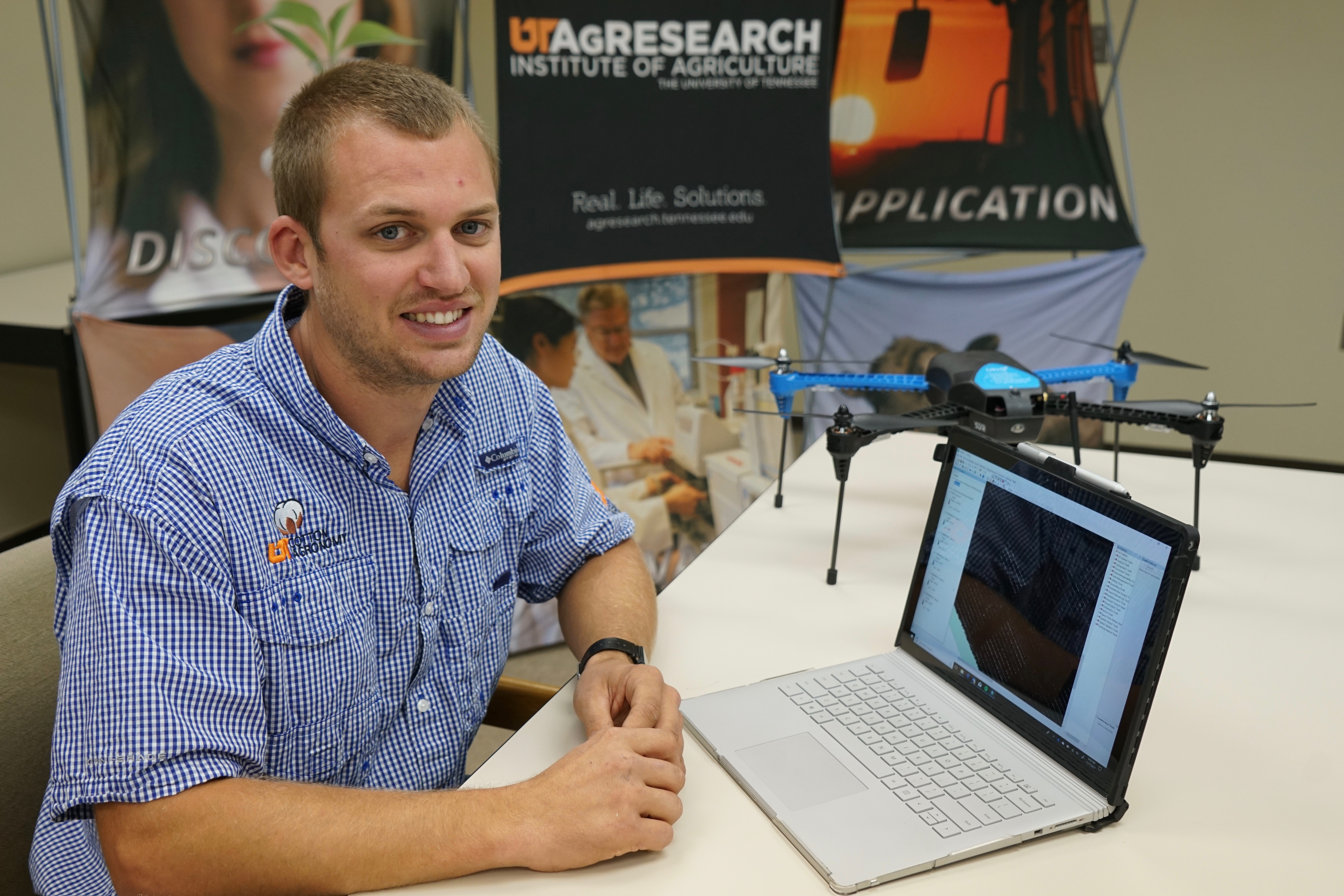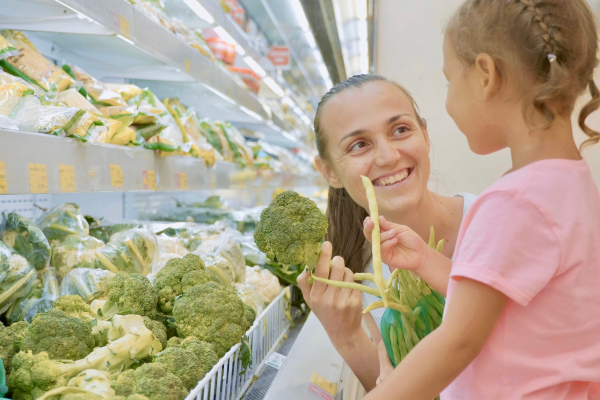Research Shows Drones Could Help Crop Management Take Off

Shawn Butler, a graduate student at the University of Tennessee College of Agricultural Sciences and Natural Resources, analyzes cotton research plots from his laptop thanks to images obtained with an unmanned areial system (UAS), also called a drone. This research could help farmers improve crop monitoring. Photo by G. Rowsey, courtesy UTIA.
JACKSON, Tenn. – Unmanned aerial systems (UAS), commonly referred to as drones, could help farmers determine if their crop is growing satisfactorily, according to a recent study conducted by University of Tennessee Institute of Agriculture researchers.
The study evaluated the ability of a UAS to accurately and precisely determine plant populations of cotton. Producers routinely assess plant populations early in the growing season to determine the state of their crop – and what management decisions are needed to ensure an optimal harvest. This is most often done by counting the number of plants within a selected distance and repeating those counts in different locations throughout the field to find an average.
“This traditional approach is reliant upon a highly uniform plant population across the entire field and can be influenced by human bias,” says Shawn Butler, graduate student in the University of Tennessee College of Agricultural Sciences and Natural Resources. “Theoretically, an aerial approach could provide spatially dense information on plant populations across large areas quickly and remove human bias.”
For two years, researchers assessed plant stands of emerging cotton through manual counting and through images obtained from both digital and multi-spectral cameras mounted beneath a quad-copter. The quad-copter was flown at varying altitudes ranging from 30 to 120 meters.
Of the two camera systems analyzed, the images produced from the multi-spectral camera proved to be more accurate in estimating plant populations, with a greater than 93 percent accuracy. However, researchers say the red, green, blue (RGB) images produced by the less-expensive digital camera still looked promising, with a greater than 85 percent accuracy using current methods and scripted programming.
“Based on initial results, the aerial imagery provided by either RGB or multi-spectral sensors may be a sufficient tool to improve accuracy and efficiency of plant stand assessment,” says Butler. “The most impactful difference to the end user in deciding a method to use will be the cost between the two camera systems.”
“Crop monitoring is a big obstacle for many producers,” says Tyson Raper, project leader and assistant professor with the UT Department of Plant Sciences. “We want to continue to evaluate tools and methodologies that have the potential to help farmers overcome monitoring challenges, improve response time and increase profitability.”
Butler presented this research at the 2017 International ASA, CSSA and SSSA Annual Meeting, “Managing Global Resources for a Secure Future,” held in Tampa, Florida. The American Society of Agronomy, Crop Science Society of America and Soil Science Society of America hosted the meeting.
The study was conducted at three locations – the West Tennessee AgResearch and Education Center in Jackson and the UT AgResearch and Education centers at Milan and Ames Plantation. Other project team members include Mike Buschermohle, Interim Assistant Dean of UT Extension. Cotton Incorporated provided partial support for this project.
Reprinted from News & Announcements, The University of Tennessee Institute of Agriculture


